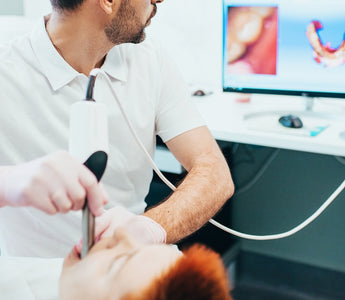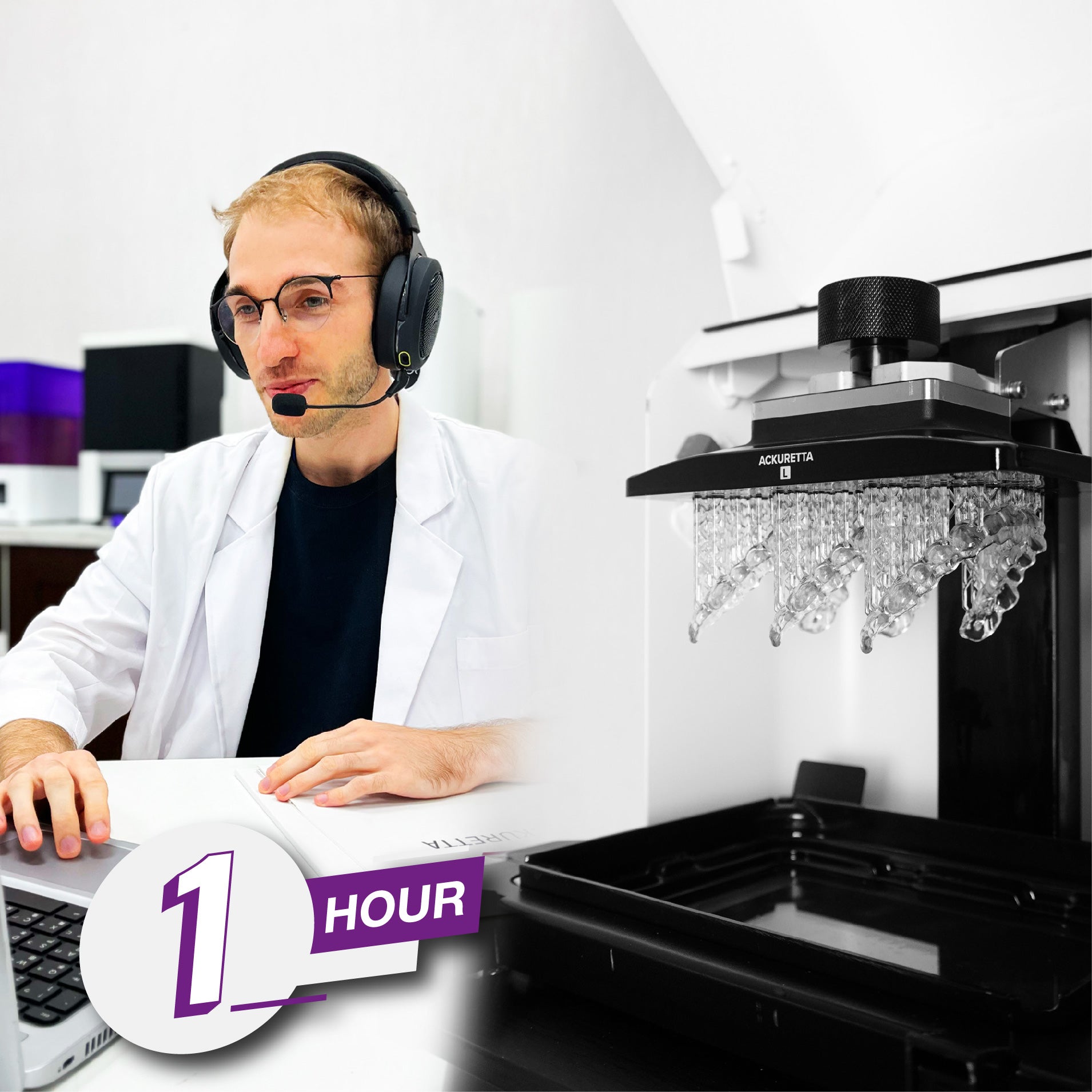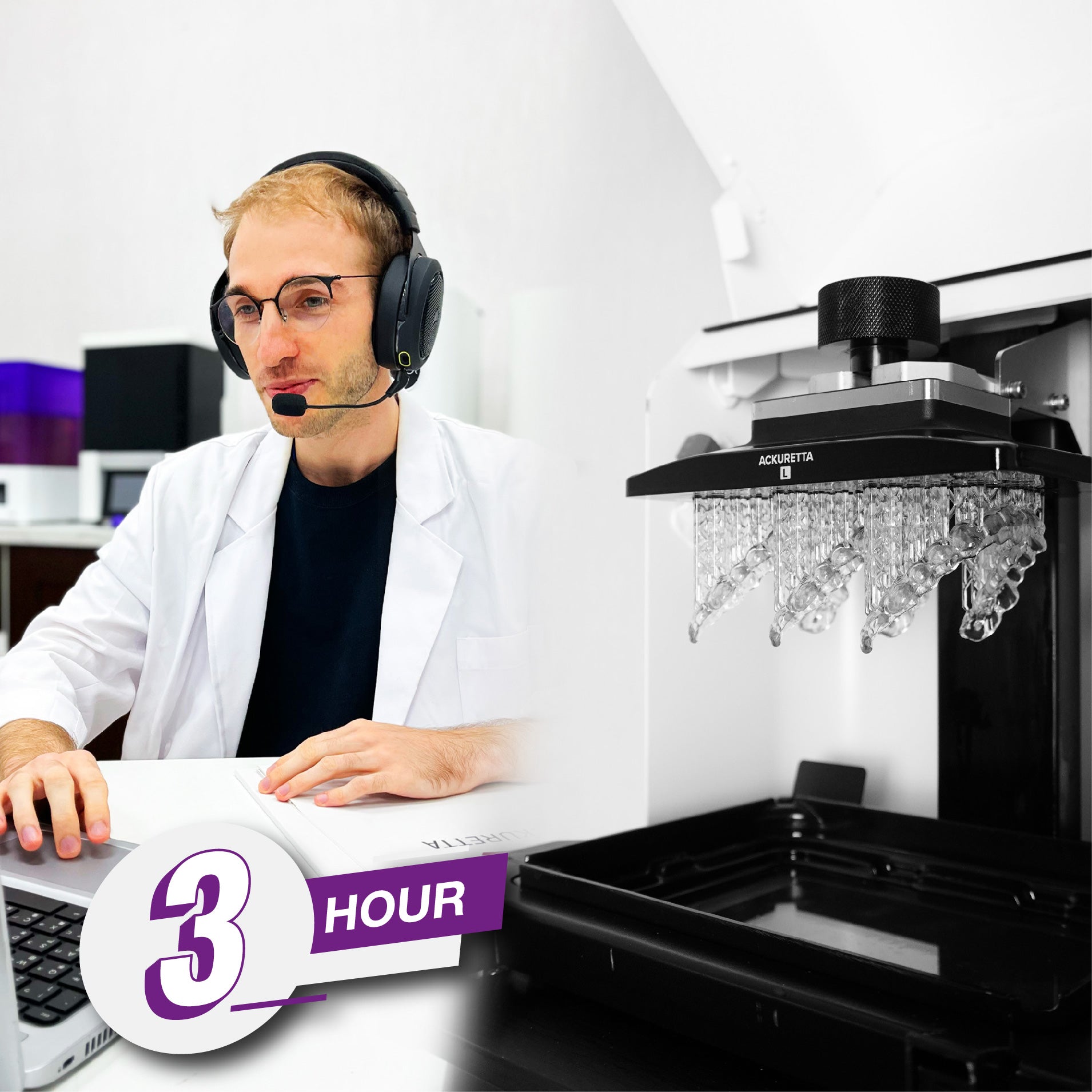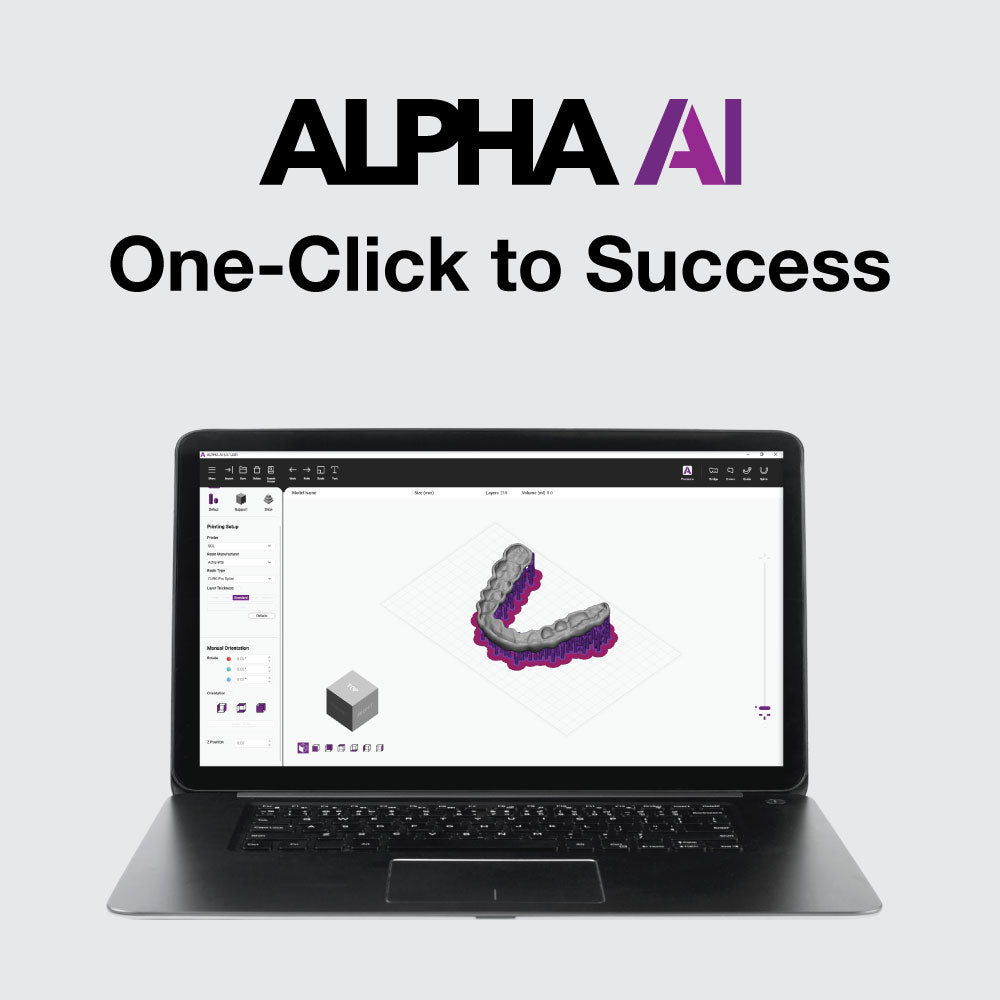3D printing has changed how dentistry is practiced today. In 2019, worries prevailed that digital dentistry might not lead to the same high-quality results as traditional. But in 2021, over 20% of dental clinics and labs in Canada, Mexico and the U.S. have successfully digitized their clinics - proving the astounding potential of the industry.
Dental 3D printing does not just produce equally excellent results, it is also faster, cheaper, and requires much less manual labor - taking a heavy burden off of dental technicians. Yet, while the benefits are significant, one must also thoroughly consider the initial investment and the necessary manpower to transition to a truly digital dental practice or lab.
Let’s outline the costs:
1 Equipment Investment
According to the image above purchasing a full solution would cost about $30,000 with the bulk of the cost being the scanner. One must also consider the high price variation in 3D printing units.
In a different article, we’ve discussed which 3D printers are most suitable for dental professionals, so if that is a question that you haven’t solved yet, then check out our Ackuretta blog and learn more about 3D printing solutions and pricing.
2 Internal skill development
With skill development to run the workflow in-house there are 2 options:
1) Train a dental assistant / hygienist to run the workflow
It is possible to run the workflow in-house without hiring a dental technician, but this will mean that at least more challenging designs will have to be outsourced. This is probably the most cost-efficient method, as it requires no additional labor cost. But it does limit the potential for same-day dentistry.
2) Hiring a digital dental technician
A full-service technician capable of designing and finishing the appliance in-house would cost the practice $20/ hr on fees or $70,000 a year with obvious time and money savings down the road. Overall, this is an ideal solution for a clinic with at least 3 dentists and a flow of 8 customers a day. A digital dental clinic can transform into a ‘practice lab’ and cut out additional fees and complexities of outsourcing altogether. Such a clinic would be a real game-changer - maximizing patient welfare & comfort.
It might make sense for all dental professionals at your clinic or lab to join a digital dentistry course, this way there is a pool of tech-savvy staff members always present.
3 Learning Curve
Introducing a digital dental workflow into a clinic will be a time-consuming and expensive undertaking. The reward, however, is a more efficient, faster, and more satisfying experience for your patients - no more extended wait periods for crowns, splints, or aligners.
Many premium systems come with tech training and customer support. Specialized 3D printers and slicing software are designed for dental professionals that might lack tech knowledge and offer a real plug-and-play experience. But working with design software, such as Exocad, does require extended training. Thus, hiring a digital dentistry technician or outsourcing this part might make sense.
We estimate that the whole learning process will take up to 3 months and might include some trial and error processes. However, by purchasing a 3D printer and software built for dental professionals, this learning curve can be cut down significantly.
In Summary
A lot has changed since 2019 and much more will happen. Newer, smarter, and faster technology is hitting the market at an incomprehensibly quick pace. Especially for non-tech-savvy professionals, this might seem overwhelming.
But our word of advice is that it is always best to go with trusted manufacturers that promise a validated workflow. This way your patients’ safety is prioritized and your medical-grade 3D printing equipment will most likely serve you well for 5 years+. You might need to invest more to purchase premium equipment, but will receive necessary tech support and training, reducing added costs at a later point.
Now the next step must be finding the right 3D printing system for you and your team! Don't just ask Google, but ask seasoned experts that have been working with numerous systems in the past.
Facebook offers a great variety of these groups, in which users exchange their 3D printing experiences, share their successful and unsuccessful prints and give advice on a wide range of related issues.
To learn more about Ackuretta's products, join the Ackuretta User group on Facebook and become part of a vibrant, global community.























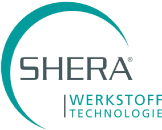








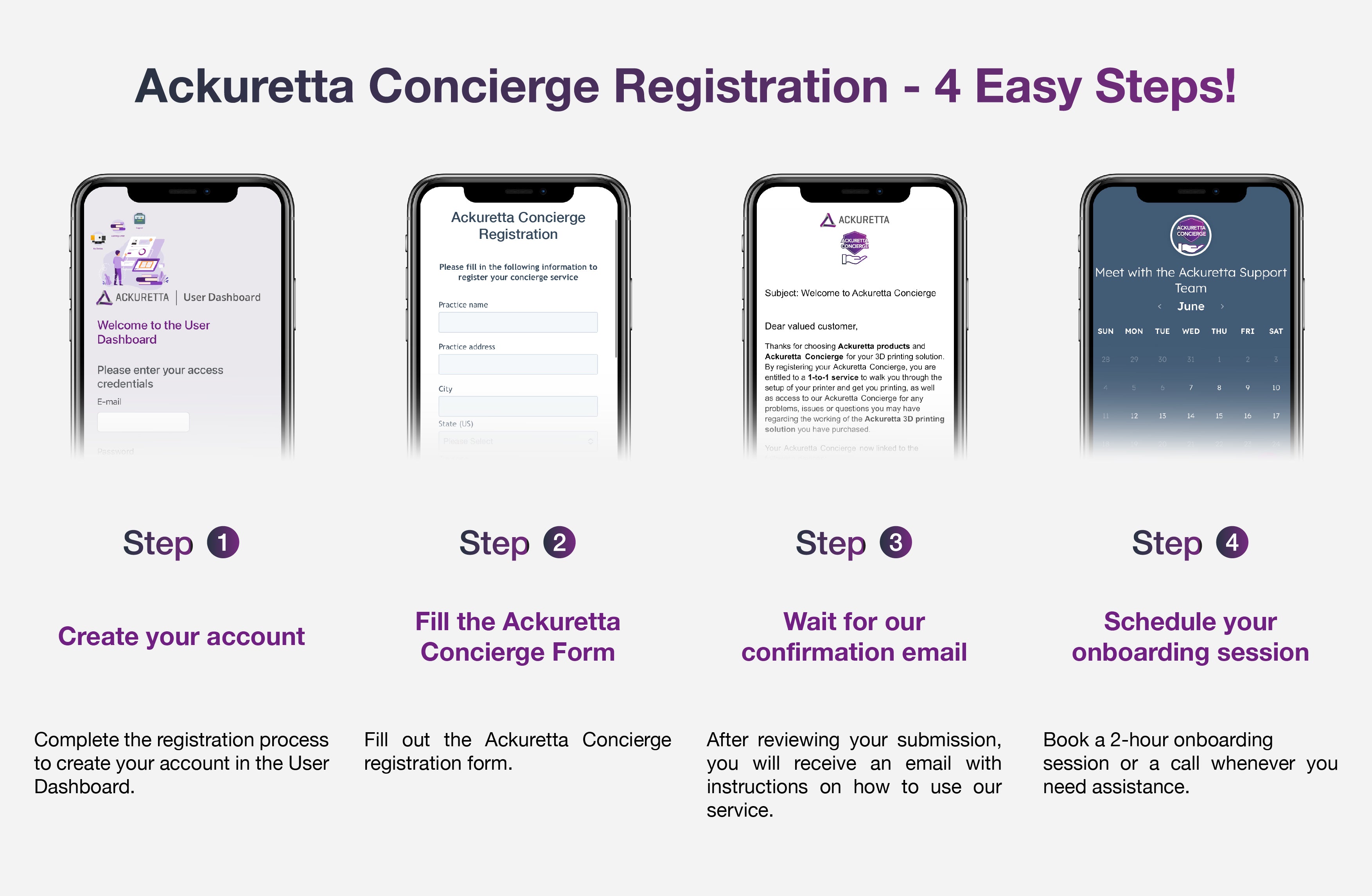






























 Loading ...
Loading ...
